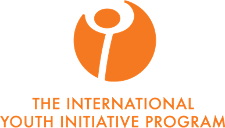Statutes
The International Youth Initiative Program (YIP) org. number SE 802439-6965
1 April 2014
Preamble
The International Youth Initiative Program (YIP) is primarily concerned with strengthening the capacity of young people to take an active role in fostering positive cultural, social, environmental, and economic change that will benefit all sections of society and to eliminate social injustice, poverty, and inequality. The YIP is global in scope and international in concept and sees real benefits in bringing young people together from all parts of the world to reflect on the meaning and impact of globalisation. The YIP pays tribute to young peoples’ potential and ability as cultural creatives within local communities and society at large.
The YIP is an action-oriented venture and seeks to provide young people with opportunities to recognise their potential to work with each other and with communities to enrich their lives and the lives of all those with whom they come into contact.
The YIP is rooted in an understanding of comprehensive sustainable development, a commitment to social harmony, and in the importance of local solutions to local problems, with the full involvement of local communities.
The unique contribution of the YIP is to bring the creative energies of young people into direct contact with the needs and aspirations of local communities. Through this engagement YIP will facilitate the growth and development of both the young people and the communities in which they develop their activities.
§1 – Name
The Association bears the name International Youth Initiative Program (YIP).
§2 – Legal form and legal seat
The International Youth Initiative Program is a Non-Profit Association under Swedish law based in Järna, Sweden.
§3 – Purpose of the Association
To execute the International Youth Initiative Program. Which includes the following aims and objectives
- To empower young people, with the skills, knowledge and resource needed for recognising social problems/needs and using entrepreneurial principles to organise, create, and manage their initiative for social change.
- To facilitate and maintain a global network of selected social initiatives, organisations, businesses and active individuals committed to comprehensive sustainable development, as well as to supporting and mentoring youth in their initiatives for social change.
- To foster an understanding of globalisation as a deep ecological, economic, political, cultural, social, human, and spiritual challenge to humanity and the planet.
- To link greater levels of global understanding with practical experiences and local outcomes.
§4 – Powers
The Association shall have the power to do all things necessary or desirable for the attainment of its objects or incidental thereto including, but not so as to restrict the generality of the foregoing, power to
- Purchase, acquire, lease and hold real and personal property and sell, convey and lease, mortgage or transfer the same;
- Borrow money from any person or corporation and give security for any money so borrowed on any of the real and personal property of the Association by way of mortgage or otherwise;
- Accept all gifts, legacies or bequests, which may be given to the Association;
- Expend any money of the Association;
- Employ and dismiss the staff persons that it deems necessary and prudent to run the day-to-day operations of the Association;
- Employ any professional services deemed necessary for the Association;
- Implement and finance travel support and scholarships for participants who might otherwise not be able to attend the International Youth Initiative Program
- Support, financially or otherwise, similar tax-privileged corporate bodies, institutions under public law and foundations or public offices to the extent that the recipients use the resources to support measures in accordance with these statutes.
§5 – Restrictions
- The Association is non-partisan, non-denominational and non-political.
- The Association pursues exclusively and directly non-profit purposes. Assets of theAssociation may be used only for the statutory purposes. Any surplus of funds at the end of an accounting period may be carried over to the next period.
- The Association can enter into cooperation with any natural and/or legal partner to the extent that is appropriate/feasible for fulfilling its mission and guarantees its sovereignty.
§6 – Members
Every natural and legal person can become a member of the association, if it has an active interest in the achievement of the associations’ purpose. Membership is valid for 1 year from date of payment of the membership fee.The Association consists of the following member categories:
Individual Members(1):
- Active members with right to vote
- Supporting members without the right to vote
Institutional Members(2):
- Active Institutional Members with the right to vote
- Supporting Institutional Members without the right to vote(1) The category ‘individual members’ gathers individuals.(2) The category ‘institutional members’, gathers associations, local public institutions, and other public or private institutions, with or without legal status.Limits to active membership The admissions as active member or active institutional member depend on the direct involvement in the activities of the YIP and on the invitation in writing by the Board of the Association.
§7 – Right to Vote
Every active individual member and active institutional member has the right to vote at the General Assembly of Members. Supporting members and supporting institutional members have no right to vote at the General Assembly of Members.Each active member and active institutional member has the right to only one vote.
Every active member and active institutional member may authorise in writing another active member and active institutional member to represent him/her at the General Assembly. No active member or active institutional member can represent more than two other active members or active institutional members. Authorisations must be mentioned in the minutes of the General Assembly and included in the Association’s archives.
§8 – Application
Requests for membership are to be send through our online application system on the YIP website. The membership is valid when the membership fee has been paid.
The Annual Meeting defines the membership fee.
§9 – Resignation
Membership resignations are to be addressed in writing to the Board and will come into effect 1 year after the last payment of the membership fee.
To be valid for a new year, memberships must be renewed every year through payment of the membership fee. If it is not renewed within the end of January every year, the membership expires automatically.
§10 – Exclusion
Exclusion takes places due to a Board decision if the member
- acts contrary to the purposes of the Association
- offends against the goals and interests of the Association
breaks the statutesThe decision comes into effect after confirmation by the Members Meeting, where the member is given the opportunity for justification.
§11 – Board
The Board manages the Association. It is responsible for the realisation of the Association’s purpose, and decides on the use of the Association’s assets.
Active individual members and active institutional members elect the Board on the Members’ Meeting. Only active individual members can be elected for the Board.
The Board consists of 3-9 persons.
The period of office of the members of the Board is two years (shorter periods can be allowed in exceptional cases). Period of office of the Chairman of the Board is one year. Reelection is admissible. Ideally half of the seats in the Board should be up for election every given year.
The Board constitutes itself.
The members of the Board may receive appropriate remuneration for duties carried out on behalf of the Association. Expenses incurred in pursuance of such duties are refunded.
In the case of an increase in available funding or an expansion of the associations activities, the board of directors may hire a Managing Director to prepare for decisions which are to be taken by the Board and to carry out the Board’s duties. The Board may call in specialists.
§12 – Procedures of the Board
The Board meets as often as necessary but at least once a year. The Chairman of the Board convenes the meetings.
The Board Meetings may be held through electronic communication. Decisions are taken on the basis of a simple majority of the votes cast.
Decisions, which involve an amendment to neither statutes nor dissolution, may also be carried out by correspondence.
The board gives suitable information on an annual basis to funders and donors about the activities of the Association.
§13 – Members’ Meeting
The Members’ Meeting is the supreme decision making body of the Association.
The Board effects the summoning of the Members’ Meeting, as often as this appears necessary to it. The Members’ Meeting must be held at least once a year as an Annual Meeting.
Furthermore the Members’ Meeting is to be summoned, if at least one fifth of the members require this through a written request to the Board. In this case the Members’ Meeting has to be held within eight weeks.
The invitation happens in writing or e-mail with two weeks notice and includes the agenda. Members must be granted the possibilities to submit further items on the agenda before the meeting.
Each properly summoned Members’ Meeting is empowered to make decisions with the present active individual- and active institutional members, adopted by a simple majority of votes of the present active individual- and active institutional members.
The Annual Members Meeting has at least the following tasks:
- Fixing of the agenda
- Excepting the minutes of the last annual members meeting
- Approval of the annual report and financial statement for the previous year
- Discharge the Board
- Establish the work plan and tentative budget for the coming year
- Election of the board and the auditor
Defining the membership fee
§14 – Advisory Council
The association shall establish an advisory Council consisting of persons whose experience and knowledge may be valuable and useful for the association.
The members of the Advisory Council may advise the Board in their activities.
The appointment as an Advisory Counsellor of the association shall be decided by the approval of a simple majority of the Board upon the nomination by a member of the Board.
§15 – Fiscal year and accounts
The Association’s fiscal year coincides with the educational year, commencing 1 July.
The Board prepares annual accounts of the Association including an overview of the Association’s assets and liabilities at the end of the fiscal year. The report is submitted to the supervisory authority.
$16 – Liability
The liability of the Association members is limited to the assets of the Association.
§17 – Amendments to or changing of the statutes, merger, dissolution
If the Association’s purposes can no longer be fulfilled, or no longer appears meaningful in view of substantially altered conditions, the Board may decide on a change in the Association’s purpose, a merger with another association, or the dissolution of the Association.
Decisions on amendments or changes to the statutes, a change of the Association’s purpose or dissolution of the Association, require an agreement of the Members’ Meeting.
§18 – Devolution of assets
If the Association is dissolved or otherwise ceases to exist, the remaining Association assets goes to a non-profit association who is to use the money in accordance with the association’s purpose exclusively and directly for non-profit as stated in these statutes.
When separating, dissolving or abolishing the Association, its members can make no claims towards the assets of the Association.
§19 – Date of commencement
The Association’s statutes take effect on the day of the approval by the tax office, Skatteverket, Stockholm.
Järna, Sweden, Tuesday, 1 April 2014

